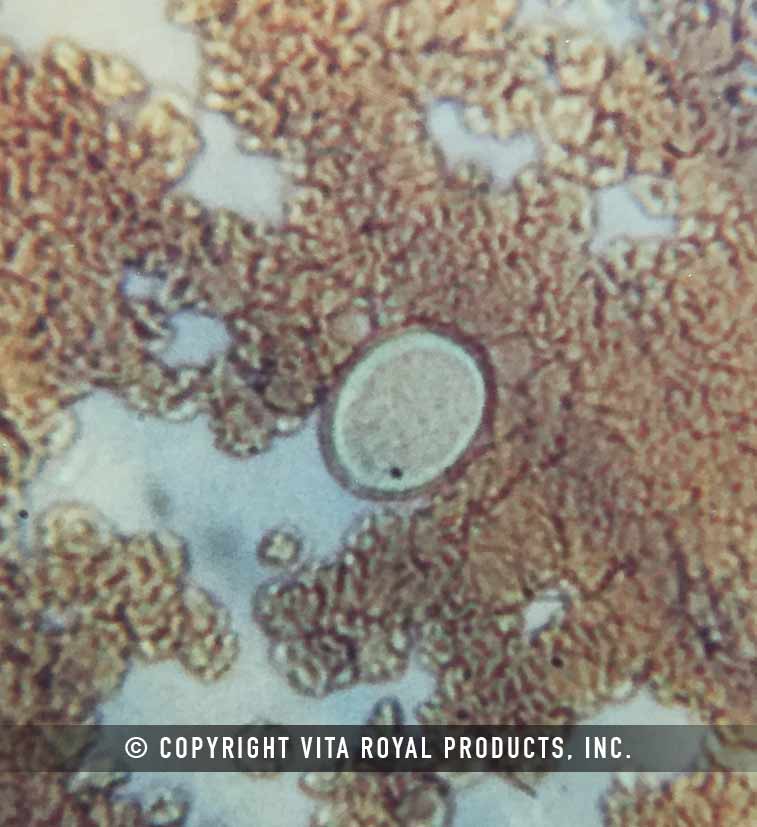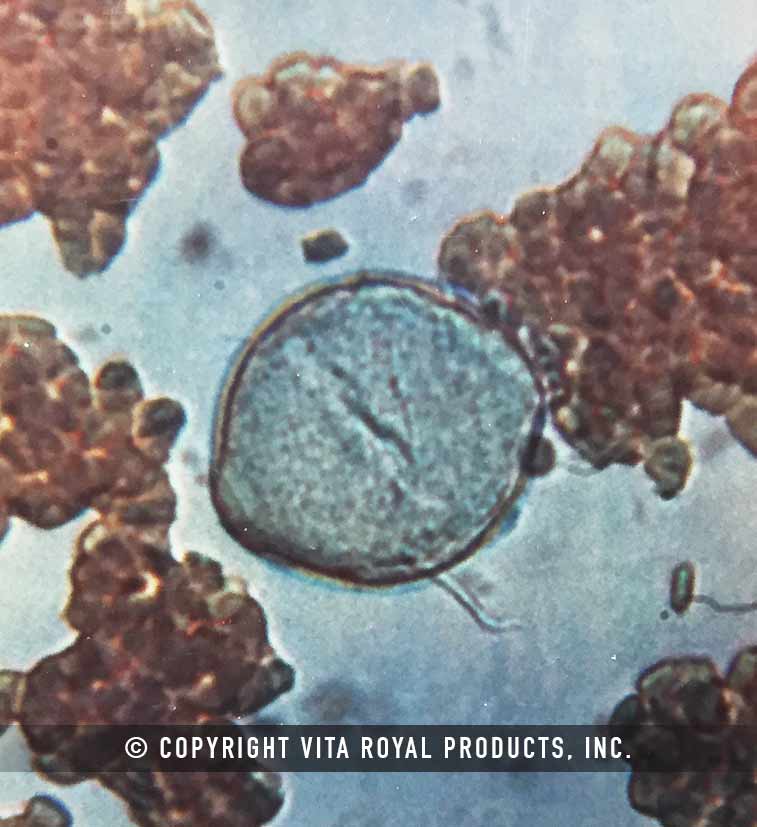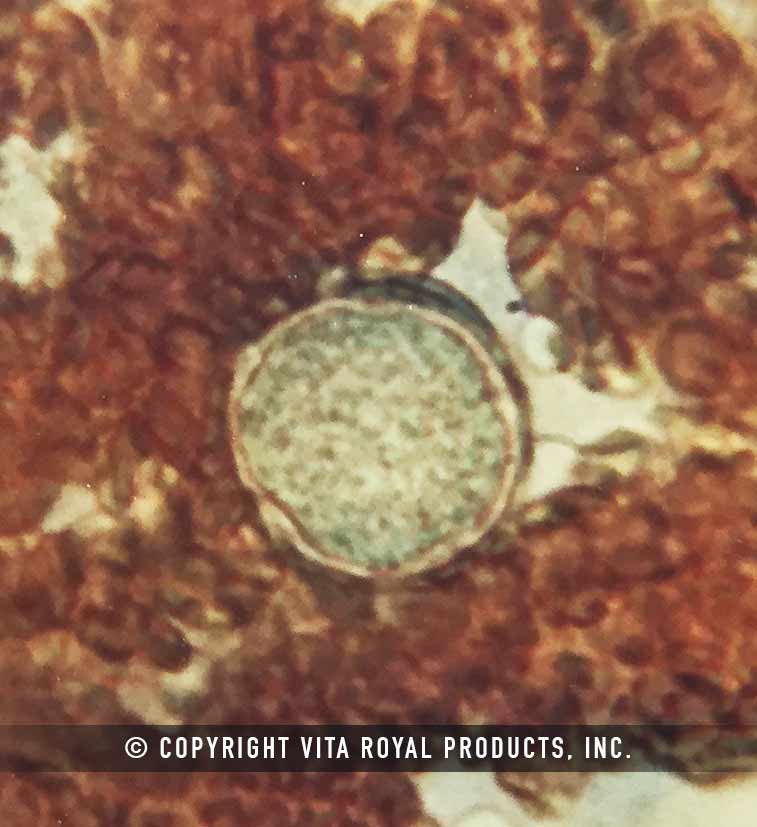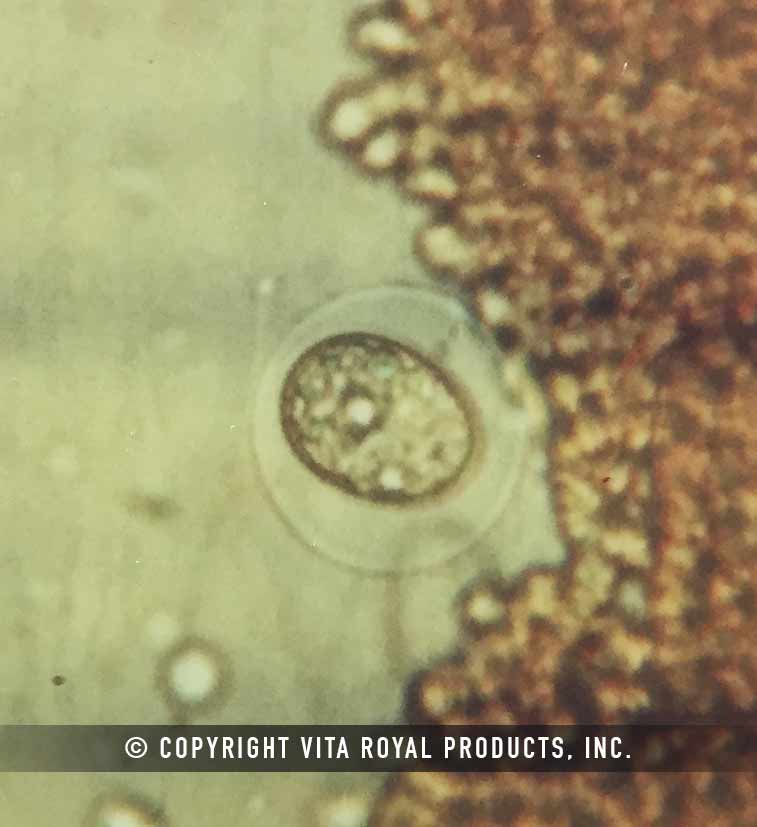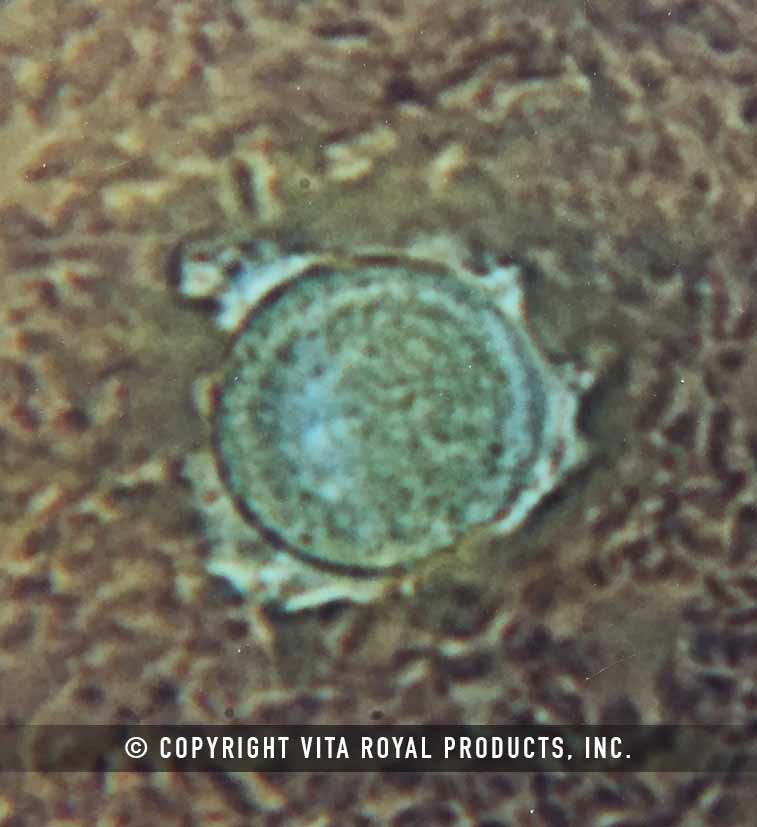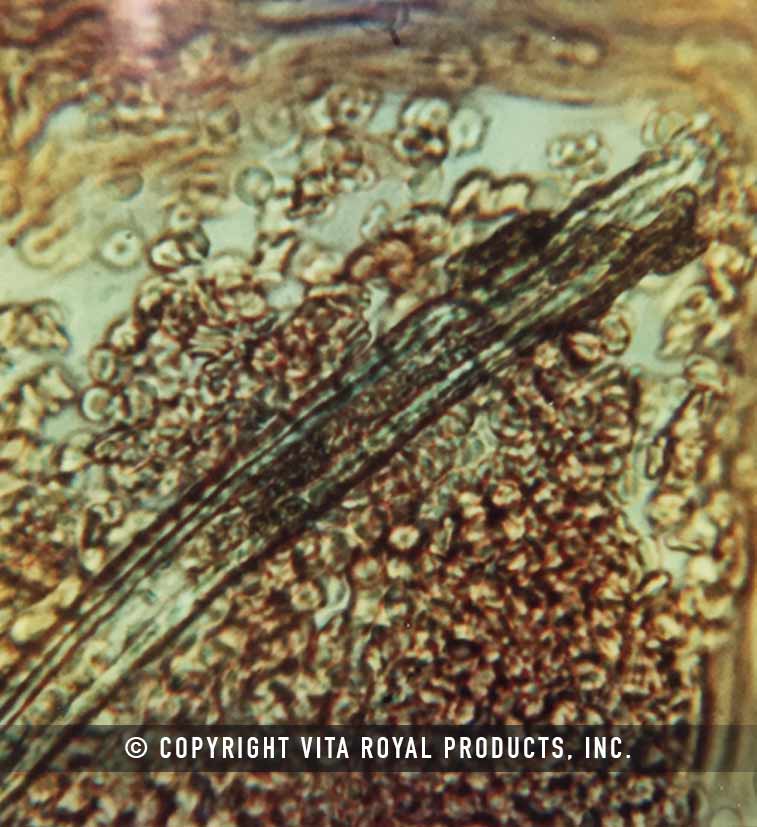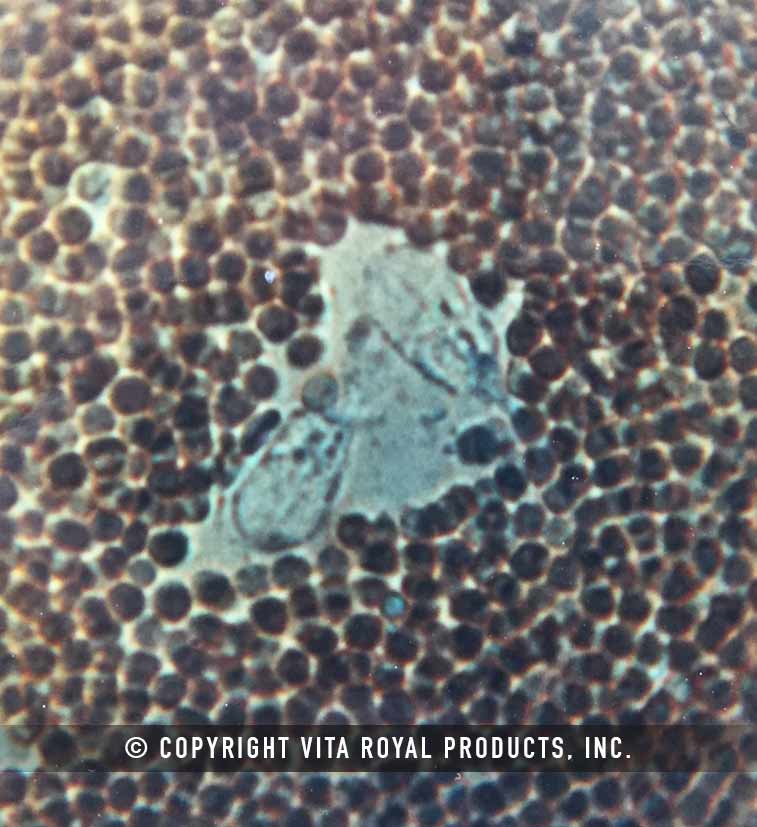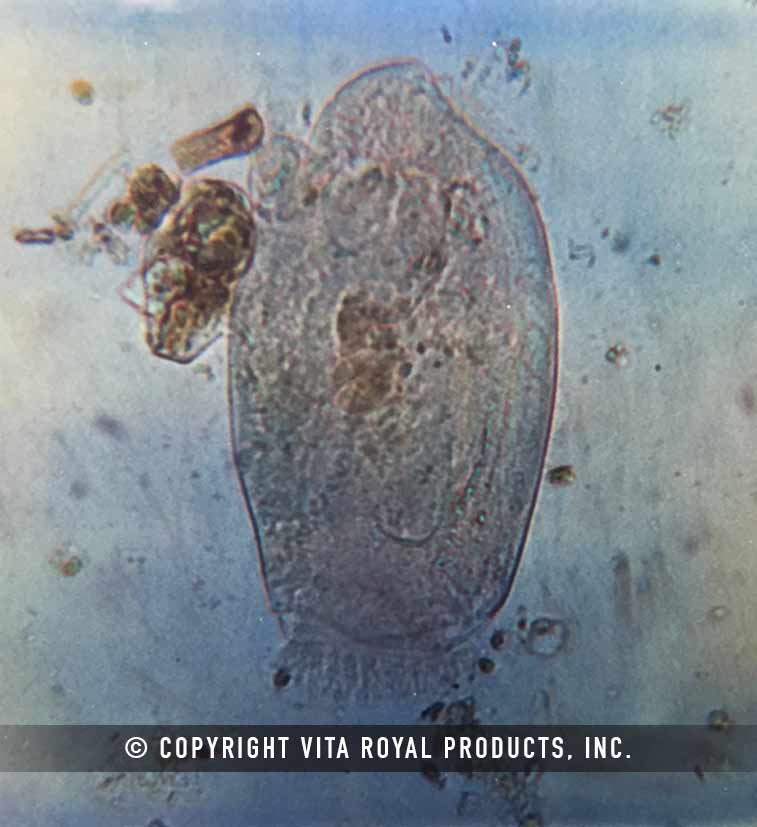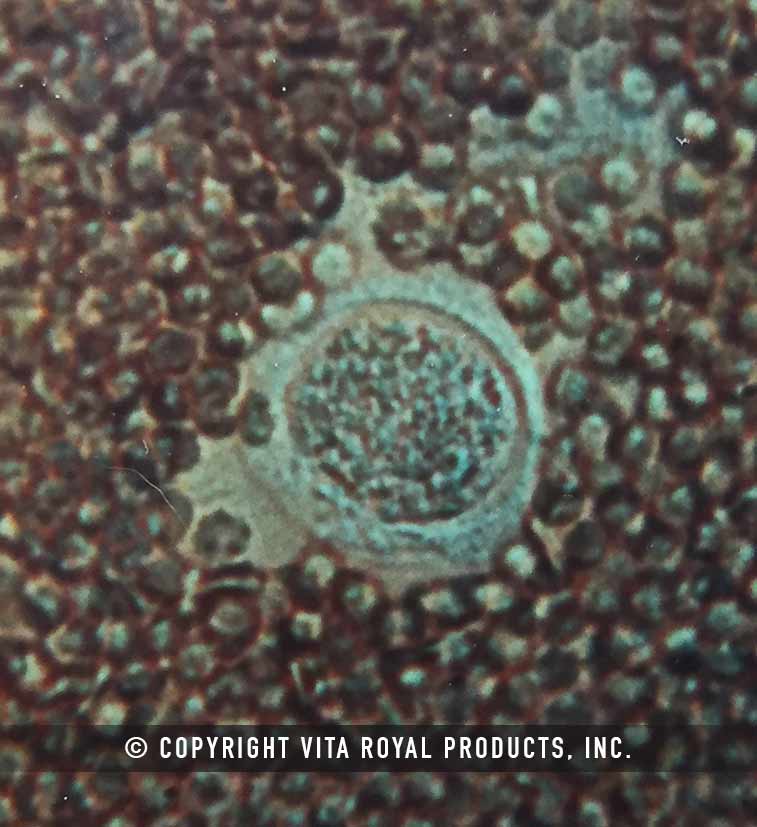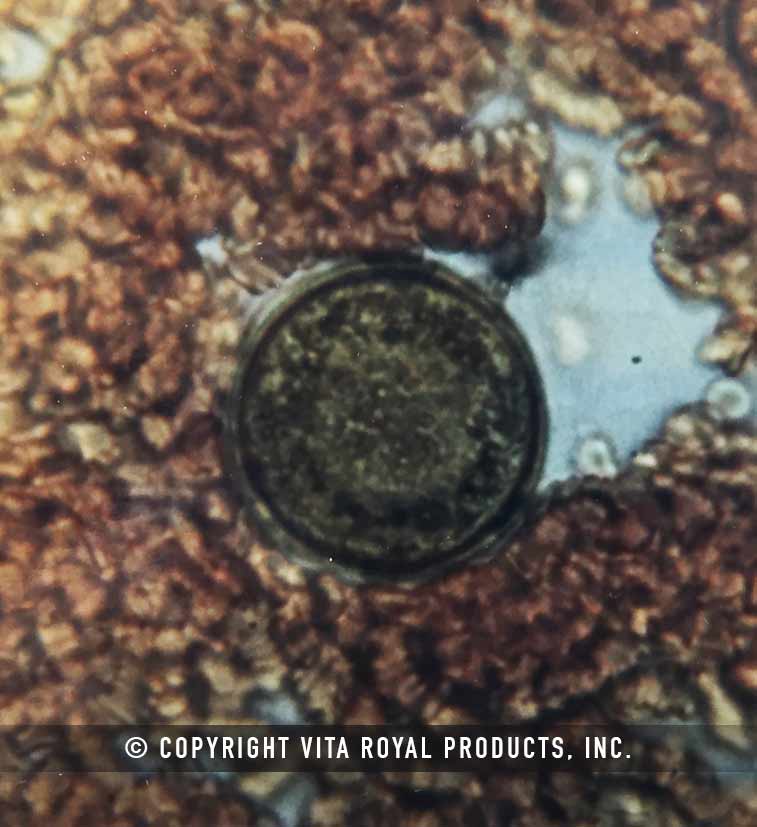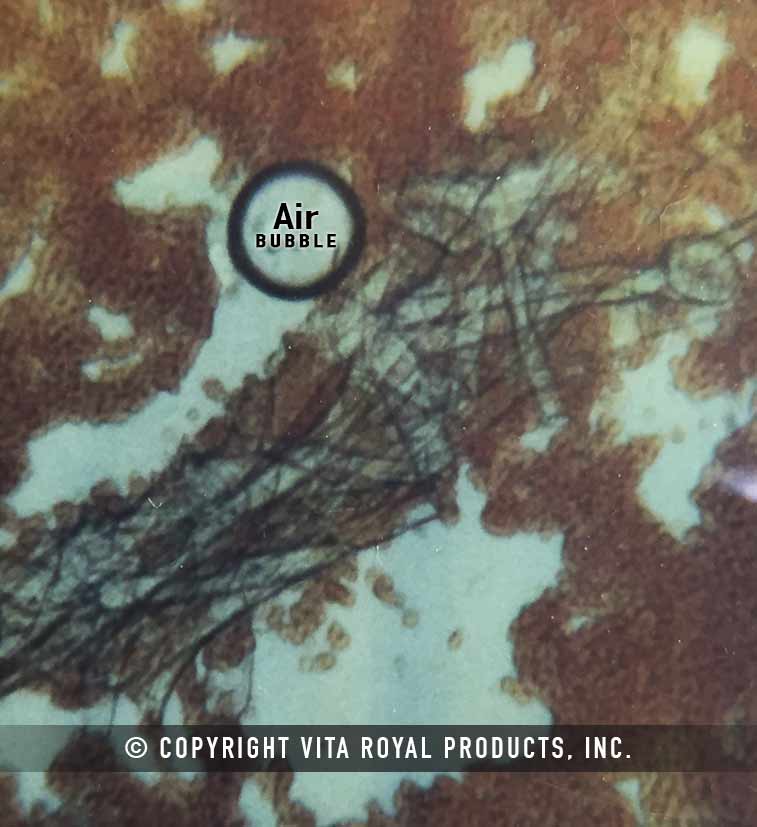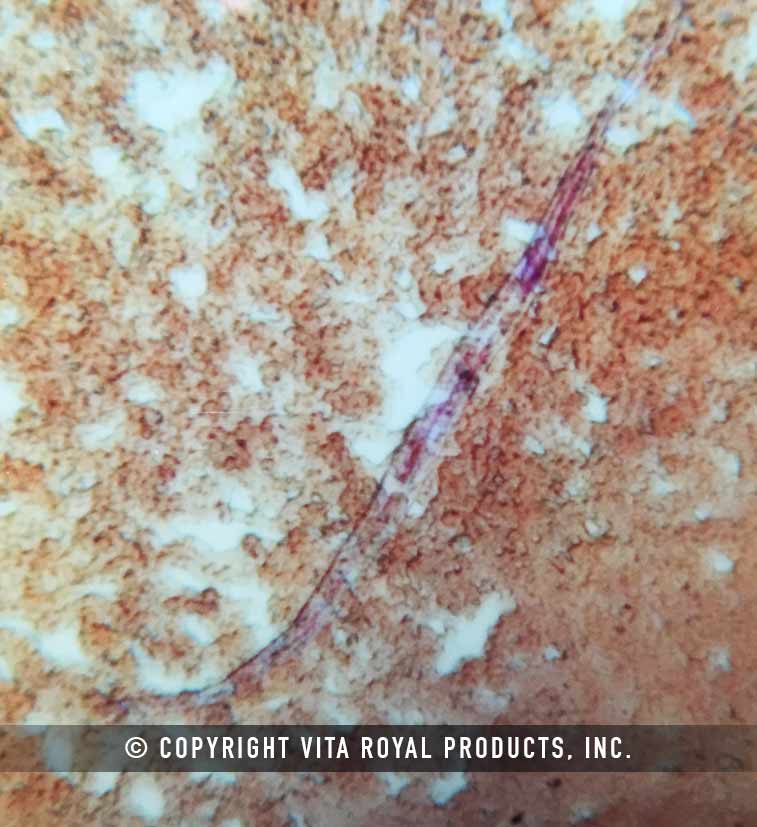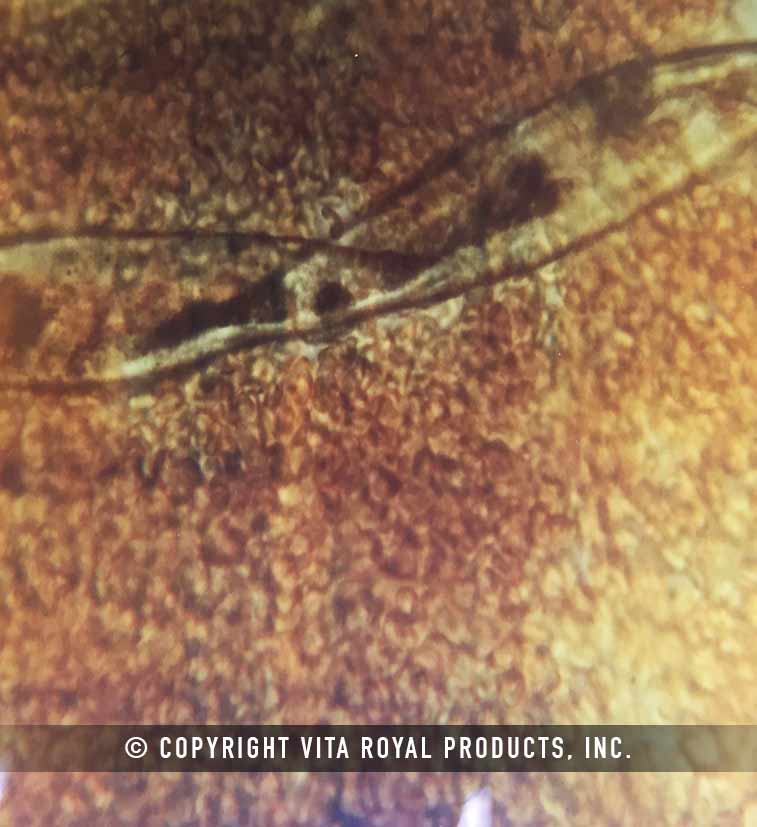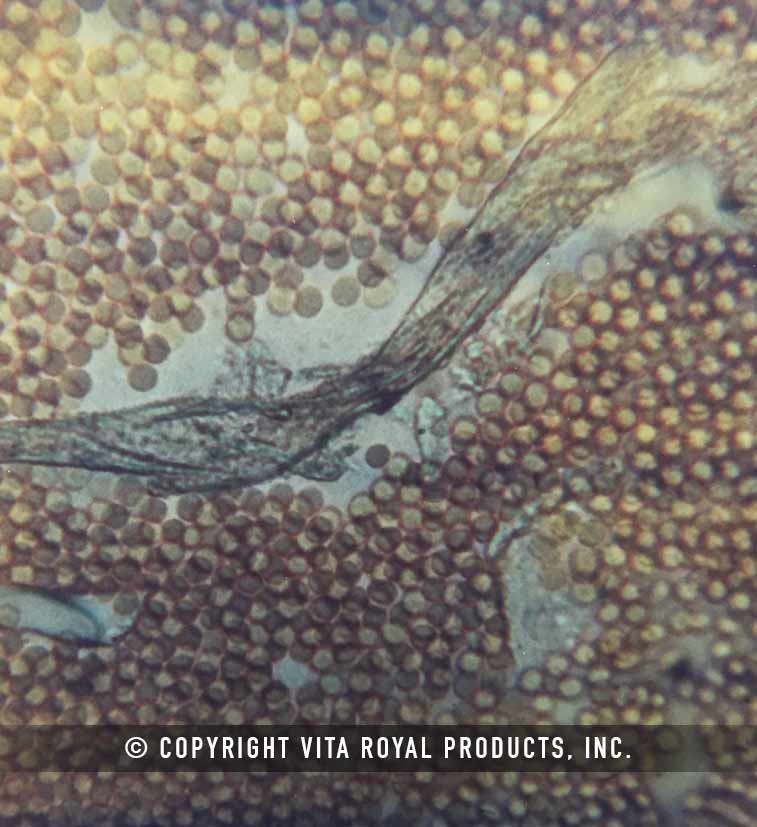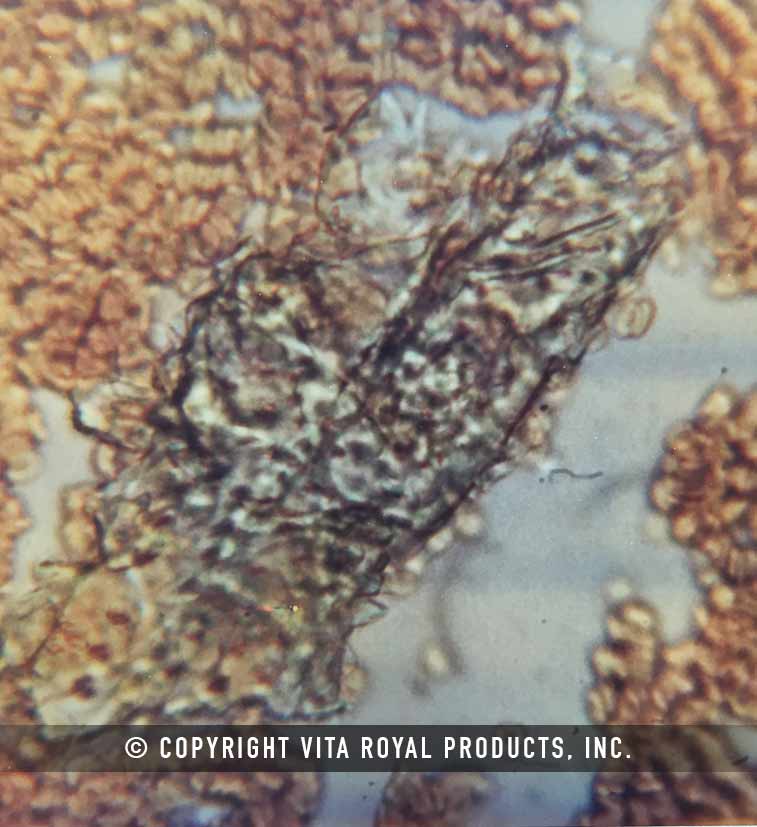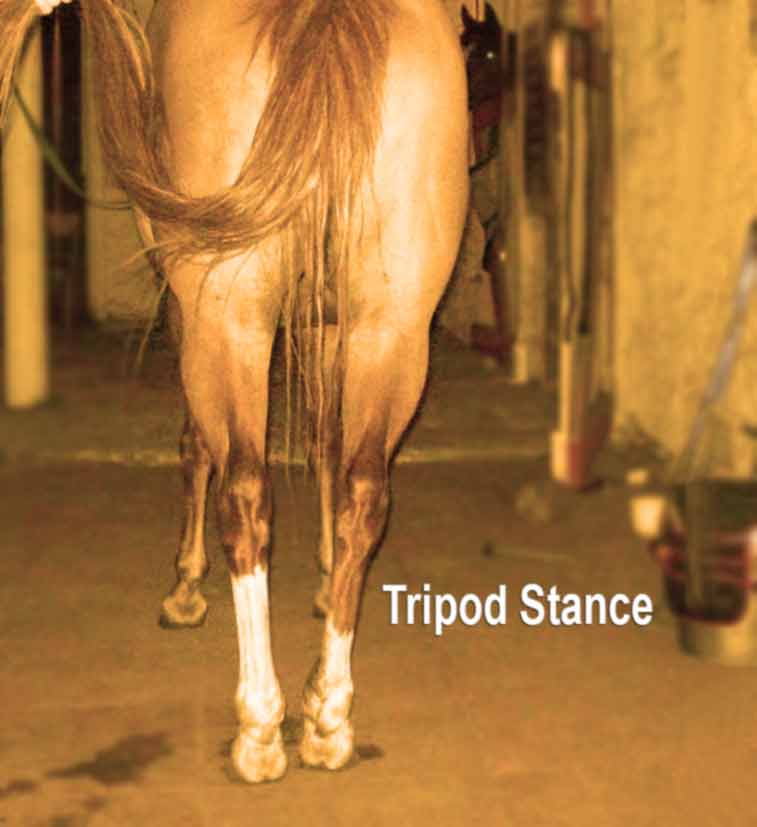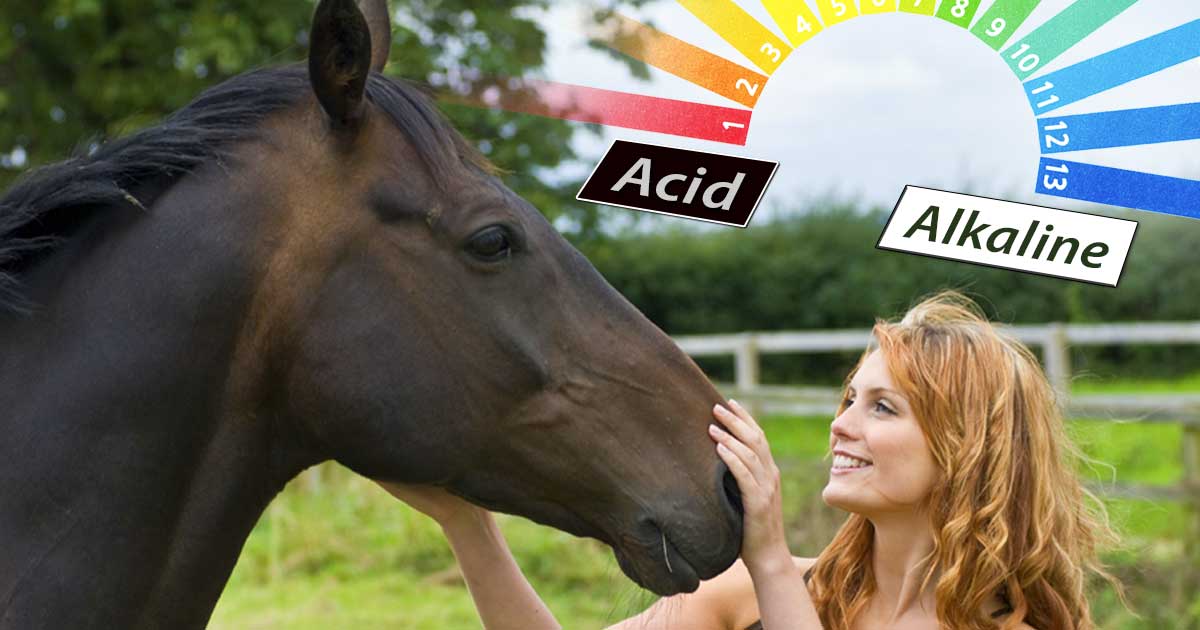EPM in Horses
(Equine Protozoal Myeloencephalitis)
There is more to the EPM story than conventional veterinary medicine currently explains. The significant impact of environmental conditions on the overall biochemistry of the horse’s body goes largely unrecognized. Here are a few of the most significant contributing factors to the EPM epidemic:
Gut acidity: we have found that vitamin, mineral, and protein deficiencies as well as imbalances are common in horses who are fed cheaper feeds. These poor formulations can produce higher acidity in the gastrointestinal mucoid membrane and then the intestinal walls by creating a chain reaction. The change in gut bacteria typically causes a decrease in the structural integrity of the membrane and intestinal walls. The change in gut bacteria also causes an undesirable change in nutritional uptake as different gut bacteria breakdown different nutrients, and the excessive acidity simply eats away at the tissue of the intestines which never evolved to endure such low pH. So, high acidity in the gut leads to malabsorption of food and increased intestinal permeability which allows bugs, bacteria, parasites, fungi and even food particles to enter the blood stream and initiate huge inflammatory responses.
Gut acidity and also immune response from the gut (90% of the total immune response is in the gut) is also affected by GMO feeds and most particularly glyphosate, better known as Roundup®. We now know that this toxic herbicide will adversely affect the bacteria and fungi in the gut, and act as an antibiotic, killing off the beneficial probiotics.
Not only are Bt GMO crops genetically engineered to manufacture their own Bt toxins inside their cells, but many crops are also sprayed with Roundup®/ glyphosate just before harvest as a drying agent. This saves the farmer time in the field and eliminates the cutting and laying down of the crop to dry before actual harvesting. This latter activity makes the straw from that field as well as the hulls from those crops especially heavy in chemical residue. For this reason, all hulls and grains with hulls like whole oats and soybean hulls should be avoided, as well as straw from those fields for bedding. Feeding probiotics is helpful but only if the sources of glyphosate are limited. Glyphosate is now virtually everywhere, being used on nearly everything. We cannot absolutely avoid it, so we do the best that we can by limiting exposure where we can.
Body temperatures: The thyroid gland plays the biggest role in regulating healthy body temperatures, and it takes a big hit from harmful environmental chemicals ingested by the horse in food and water, usually under the radar of owners and trainers. It is essential that we filter all drinking water by carbon filtration at least. Softening the water with a softener is necessary to prepare the water for carbon filtration because the excess hardness/calcium in the water will coat the carbon granules and render them inert. Eliminating foods that compromise thyroid, such as legumes of clover, alfalfa, soy, beans and peas is also important. A weakened thyroid causes lowered body temperatures and makes it possible for all kinds of bugs to live and grow in places that they normally couldn’t. It also compromises the immune response so that a fever cannot be mounted in sickness, to help fight the infection. EPM is one disease syndrome caused by varieties of these bugs entering the body cavity through weakened intestinal walls, instead of passing out of the body harmlessly as they should do. From there, they permeate all kinds of body tissue and can even enter the blood stream. If the thyroid is healthy enough to maintain good basal temperatures, and the food and water supply is maintaining proper health and integrity of the digestive lining, then these bugs, bacteria, parasites, and fungi have a much harder time gaining access to the internal body and surviving outside of the intestines.
Conventional Wisdom
Equine Protozoal Myeloencephalitis is thought by most to be caused by a single organism, Sarcocystis neurona. All current conventional protocols maintain this theory and direct their drug therapies toward these organisms. However, a more logical and complete view of this disease indicates that many different organisms appear to be involved, as many have the same open door to the body through weakened intestinal walls. Treating this disease with antibiotics aims only at ‘resolving’ an opportunistic [infecting] organism. No matter which or how many species are involved, in the case of EPM, antibiotics really only address the symptom, not the fundamental cause of the symptom. Unfortunately, this is how much of our conventional medicine works for people too; if you have a symptom, drug companies can relieve it, but they don’t target enough the actual cause of the symptom(s). EPM is wrongly written off as a disease your horse could only get from raccoons, cats, birds, armadillos, skunks, or sea otters.
Another common similarity seen in horses with hind gut acidity, neurological symptoms and EPM problems is a history of being fed DE/ diatomaceous earth products.
Latest Research
Our Biochemist and Founder, Linsey McLean, has been studying EPM since the early 1990s. She has played a key role in shaping the equine nutritional supplement market since 1977. She is one of the very top equine specialists in the world.
We have found sources of toxicity that have lowered body temperatures, basal metabolism and immune function in horses, increasingly, over the last few decades. Man-made chemicals in the horses environment such as solvents, herbicides and pesticides mimic hormones and lower basal metabolism. The resulting decrease in immune function disrupts the balance of biochemistry in horses, as well as other mammals. This makes their bodies suitable hosts for “opportunistic” infections like protozoa and other parasites, to which they were formerly immune. The very definition of “opportunistic infections” means that there has to be an opportunity for them to flourish in the living body where they could not normally do so. The opportunity is created by toxic exposures and poor quality feed. To date, there are over 1½ million new chemicals that have been added to our environment just since WWII, as residues in our food, water and air - even more so for livestock and farm animals. And, over 80,000 of those chemicals are well known to be hormone/endocrine disruptors too. The general population of humans and even our pets, have suffered a decline of body temps from the normal healthy standard of 98.6℉ for humans, and 100-100.8℉ for horses. Even most racing horses fail to measure up nowadays. And, basal temps are critical for the immune system in defense of the body against pathogens. Just restoring normal body chemistry in the face of constant exposure to compromising environmental chemicals can elicit healing in most, if not all symptoms in commonly affected horses, but it takes a specialized protocol to do that, incorporating purified water, good quality non-legume protein feed, grass hay, specialized mineral supplementation and detox.
A perfect and representative example is seen today as the epidemic of a disease -Equine Protozoal Myeloencephalitis (EPM)- not previously observed in the horse population of the United States to any degree. This disease is descriptive of protozoal trophozoites or free living forms, migrating through the tissues of the body, including the central nervous system, and causing various and sundry lamenesses, ataxias and behavioral changes and many different protozoa have been implicated. What makes this example so relevant is the fact that the horse, a grazing vegetarian, has become susceptible to such a huge degree as to cause up to 80% of the horse population of a given area to test positive for blood antibodies to the most commonly implicated, and the most notoriously invasive, of the protozoa species, Sarcocystis neurona. This pathogenic protozoa has previously only been found in carnivores, such as opossums and raccoons. It is known that carnivores have a lower gut pH than vegetarians, particularly vegetarian grazing animals such as horses. The environmental changes that have been described here explain why the previously unthinkable is now commonly observed whereby that grazing vegetarians (in this example, horses) would now become susceptible, en masse, to the same diseases and parasitic infections that plague a carnivore. Statistics from university research over ten years ago describe the incidence of ulcers in horses occurring in between 52-90% of the entire horse population, relating to different breeds, ages and work loads. Biologically, this should not be possible unless the living environment of all of these horses has changed dramatically in the same ways and for every horse, to significantly lower the pH of the digestive tracts of these grazing vegetarians. Ulcers in grazing vegetarians should not even be possible under normal conditions, indicating that the abnormal exists. Equine medical textbooks from the 1960’s stated that horses were not even capable of developing ulcers because they were grazing vegetarians.
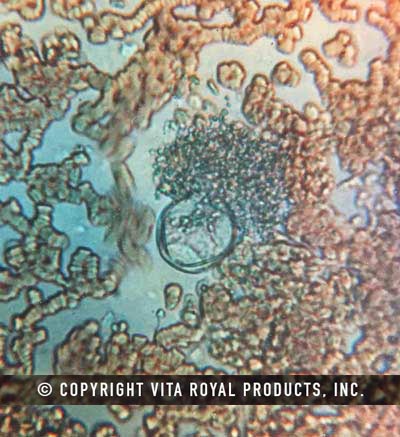
*Sporocyst releasing protozoa into the blood stream
Microbiological and/or parasitic organisms have evolved a mechanism by which they can monitor their environments and respond only when conditions are favorable for completion of their life cycles. This adaptive advantage is the development of a thick wall around a "hibernating", inactive stage of life. Only after lengthy exposure to a low pH liquid environment, which in effect "digests" or destroys this thick wall and triggers activation of the organism, does the organism emerge as a free form or trophozoite, able to complete its life cycle and reproduce. One can see how a protective mechanism, such as this thick wall, can prevent extinction for the species and promote proliferation. If the encapsulated cyst happens to land in a mud puddle caused by rain, only to dry up within a short time, the conditions would not have been met to satisfy the requirements for life cycle completion. If the encapsulated cyst were to fall, on the other hand, in the waters of a swamp, the pH of the water, sufficiently low from the rotting vegetation in the water, would trigger the destruction of the thick wall and activate the organism to complete its life cycle. In this way the organism would, by the pH of the water, "know" when conditions were right which is in turn dictated by the length of time the water had been standing. Longer standing water is generally lower in pH. and the chances are that the longer the water has been standing, the longer it will continue to stand to provide adequate time for completion of one or many life cycles. Exposure to excessive acids in a digestive tract, not able to be buffered properly within a suitable time frame, mimics this natural chain of events in the wild for these microorganisms. Hence, their opportunistic, pathogenic nature and their epidemic disease occurrences in previously non-target hosts.
The active trophozoite form, or free living forms of these in organisms, released from their protective encapsulation by excess gastrointestinal acids, are now capable of migration through tissues, even to cerebrospinal fluid, causing ataxias and other various and sundry physical dysfunctions, depending upon the location of migration and the corresponding inflammatory reactions they elicit. Species not commonly regarded as "pathogenic" or having the innate ability to invade the body on their own, can, with the door to the interior tissues and body cavities opened through membrane fractures or increased intestinal permeability, now become opportunistic pathogens. This situation is likened to an open door to a candy shop, with candy sitting out in full view of a 5-year old child passing by. Normally, this young child would not think of going into a candy store through a closed door to help himself to the candy. But, the situation changes as opportunities and temptations arise with the open door. A young, innocent child becomes, under the right conditions, a thief. So too with common intestinal inhabitants previously regarded as innocent or "non-pathogenic and normal" fauna and flora.
In the current epidemic of Equine Protozoal Myeloencephalitis, previously thought harmless species of intestinal protozoa show up in increasing numbers as trophozoites or free living forms, in fresh fecal smears and hemolyzed blood, corresponding to the severity and numbers of physical dysfunctions. Also seen are whole worms and pieces of worms, partially digested fiber foods, pollen grains and other artifacts that must have come from the digestive tract through the gut fractures to be able to enter the bloodstream. All of these can also affect an immune response and disease state.
Restore the Hind Gut in an EPM Horse Nutrient Buffer®H/G
Nutrient Buffer® HG is a nutritional supplement U.S Patented for treating and preventing excessive intestinal permeability in the gut. The composition provides nutritional buffers to the gastrointestinal tract as well as buffered, optimal amounts of amino acid chelates, minerals, and vitamins. The composition includes antioxidants, free radical scavengers, and beneficial probiotic organisms to restore intestinal health.

Excessive intestinal permeability Leaky Gut Syndrome is caused by the inability of the biological system to properly buffer the chyme ingredients of the small intestine. The lowered pH then irritates the membranes and other tissues in the digestive system causing breakdown of the cell membranes, intestinal permeability, and even leakage of larger digestive contents outside the digestive tract. Cell membranes are only two molecules in thickness, composed of a high percentage of protein, whose peptide bonds linking the amino acids, are highly susceptible to subtle downward pH shifts. This lowered pH causes proteins to deform and change shape, called “denaturing”. This deformation/denaturing can be demonstrated by adding milk to orange juice and watching the curds of deformed milk proteins form, in response to the lowered pH of the mixture containing citric acid. If the curdled milk/orange juice mixture is then buffered with baking soda, or the like, raising the pH, the curdles disappear and the mixture creams, as the milk proteins regain their shape again. When the proteins of the cell membranes become deformed from overexposure to this lowered pH shift action, the micropores in the cell membranes, which allow for influx of nutrients and outward flow of cellular waste products, become deformed as well, and essentially close off. This triggers inflammatory response and cell death by starvation and waste intoxication.
The Integrity of the cell membrane is also essential for the electrical and energy mechanisms of the cell, with the cation electrolytes, magnesium and potassium inside the cell, balancing the cation electrolytes, calcium and sodium in the fluid outside of the cell. This function is similar to a car battery with its two chemical cells divided by a metal plate. Electrical activity across this plate is the source of electrical/chemical energy in the battery. The cell membrane is akin to this medial plate, across which electrical/chemical activity between the cations takes place. This is a major source of energy for the cell. Destruction of the cell membrane, all or in part, allows calcium and sodium to rush into the interior of the cell, essentially shutting down this electrical/chemical activity. The same thing happens to a car battery when the plate between the two cells is removed and chemicals from both cells are allowed to combine. When the cell membrane is destroyed, the cell itself is effectively destroyed. If this happens to take place along the intestinal walls of the gastrointestinal tract, commonly the first area of the body affected by excess environmental acidity, fracturing of the tissues of the intestinal walls occurs. This then opens the door, so to speak, for invasion of inner tissues and cavities of the body by digestive contents. Here is where the allergic reactions and migrations of opportunistic microbiological and/or parasitic organisms are born, overwhelming the immune system to virtual exhaustion. Combined with the previously described induced nutritional deficiencies, immune depression commonly results. Carrier proteins of trace minerals from the digestive tract are also affected -contributing to nutritional mineral deficiencies.
Since virtually any protein can be affected anywhere in the body by these lowered pH changes, the biochemical activity of enzymes, hormones, biochemical receptor sites, feedback loop mechanisms, and neurotransmitters are also affected, since these are proteins. This complicates physical conditioning and performance, as well as promoting behavioral changes, including clinical depression, anxiety, learning disabilities, and hyperactivity syndrome, among others. In fact, the combined effects of all of these aforementioned causative factors are the root of the commonly diagnosed gigantic category of “environmentally driven illness”.
Nutrient Buffer® HG provides a solution to the problems described above by offering a time tested U.S. Patented nutritional supplement for treating and preventing excessive intestinal permeability/leaky gut syndrome in horses. The composition of Nutrient Buffer® HG provides nutritional buffers to the gastrointestinal tract as well as buffered optimal amounts of amino acid chelates, minerals, and vitamins, to properly address and correct common imbalances in EPM horses. Nutrient Buffer® HG provides antioxidants, free radical scavengers, and beneficial organisms to restore intestinal health and aid the body in restoring the proper buffering of chyme, which in turn promotes proper absorption of nutrients, and protection from excess acid destruction of cell membranes in the digestive tract, thereby preventing excessive intestinal permeability. These nutritional buffers also aid in the promotion of health and in the healing of existing gut fractures.
Restoring optimal intestinal pH is important in maintaining resistance to opportunistic migrations of microbiological and/or parasitic organisms. These pathogens and potential pathogens are normally ingested in encapsulated cyst form, and must be exposed to a lengthy time in acid media to break the encapsulation and become free living as a trophozoite form. This active, free living form is capable of completing its life cycle and reproduction. Cystic encapsulation in the inactive stages of the life cycles of these microbiological and/or parasitic organisms provides protection from environments not conducive to the completion of their life cycles. This adaptation assures protection from extinction and continuation of the species, since these organisms have no control over the environments in which they find themselves.
H/G Clinical Trials

Clinical trials were done on performance horses of the highest caliber, either racing horses or high level show horses, where trainers were sensitive enough to observe subtle changes in attitude, behavior and physical performance. Horses were chosen for clinical trials because of the high level of focus on the epidemic proportions of Equine Protozoal Myeloencephalitis, the development of two diagnostic tests used in both blood and cerebrospinal fluid (CSF) testing for antibodies to Sarcocystis and DNA for the presence of the actual organism. These tests monitor the presence of the actual organism and its extent of migration through the body as well as the ability of the immune system to respond to it. There is as yet no such testing for humans, except for C-reactive protein which is specific for general inflammatory responses as an immune response to the leaking contents of the small intestine called “chyme”. Horses also do not exhibit the placebo effect as they do not know what they are being fed or for what purpose. Furthermore, their racing and eventing performances are measurable in ⅕ of a second increments. Their food sources are the same everyday, as well as are their living conditions. They are not subject to such human traumas as emotions, excessive living, relationship-induced depression, addictions to nicotine, alcohol or recreational drugs (all monitored by the racing commission and Federation Equestre Internationals [FEI]). This makes them the ideal candidates for clinical trials as they are conditioned athletes, receiving the highest level of care, with essentially no other outside factors to influence the data.
Clinical Trials Were Conducted Using the Following Protocol:
- Videotaped complete neurological examination by a licensed veterinarian whose practice is limited to, and specializes in, performance horses
- Feeding of the formula three times per day
- Repeated videotaping by the same veterinarian of complete neurological exam every two weeks to monitor progress
Evaluation of Progress
Two categories of horses were studied, both having been positively diagnosed by blood and CSF for EPM.
- Horses successfully treated by the common prescription drug combination currently in use, but relapsed when taken off the drugs anywhere from five days to two months, all other factors remaining the same.
- Horses never having been treated with the prescription drugs but receiving the formula of the present invention instead. All other factors remained the same.
Results: Positive responses were noted in both categories of horses about the third day. Between the fifth day and the tenth day, a worsening of symptoms and/or a rise in temperature to low grade fever was often noted, indicating the beginning of a healing crisis initiated by the restoration of the immune system and a greater response to foreign organisms already in occupation of the interior tissues of the body. This healing crisis lasted from one to seven days, after which significant progress was noted which continued until full recovery and alleviation of the symptoms between two and eight weeks depending on the severity of symptoms and the length of duration of disease.
Compared to conventional drug therapy, horses administered Nutrient Buffer® HG suffered no ill effects, depression of the immune system identified by lowered white cell count, muscle wasting, or depression so commonly reported with conventional drug treatment, and their end level of health attained was higher and with more successful performance results than with conventional drug therapy.
The monitoring of hemolyzed blood samples for free living protozoal forms, migrated from the intestine, showed the presence of living trophozoites in untreated and relapsed horses, but not in horses fed the invention beginning between three and five days after commencement of treatment to the conclusion of the trial two to four months later. This shows the effectiveness of Nutrient Buffer® HG in preventing migration of free living or trophozoite forms to the interior tissues of the body as exemplified by their presence in blood. Pieces of undigested fiber foods, pollen grains and whole blood worms seen in fresh blood smears, indicting excessive intestinal permeability, also were reduced or eliminated in horses fed Nutrient Buffer® HG . As a result of the success of these trials, most all of the trainers elected to keep their horses on the invention indefinitely.
Microbiological inspection of the fresh feces in horses under current prescription drug therapy, past drug therapy with relapse (Category A), and untreated horses of Category B, all showed excessive live moving trophozoite numbers of many species of protozoa, capable of migration, relative to encapsulated, harmless, encysted forms. Within three days of administering the invention, the relative number of trophozoite or free living forms to the encapsulated, harmless forms, was greatly reduced, in some horses approaching zero, showing the effectiveness of Nutrient Buffer® HG, preventing activation of at least three observed species of protozoa.
Horses using Nutrient Buffer® HG also showed less susceptibility to secondary infections, with which some were constantly plagued, and greater resistance upon exposure to contagious diseases exhibited by other horses in the same barn, showing the effectiveness of the invention and restoring the capabilities of the immune system.
Horses that had been hindered biochemically in their training and performance and only marginally helped by up to six months use of conventional drug therapy were able to go to subsequently higher levels of training and performance after only three weeks use of Nutrient Buffer® HG, showing the effectiveness of the product in fueling and refueling normal biochemical pathways toward the restoration of health.
In comparison with conventional drug therapy, horses being fed conventional drugs for between six months and up to two years still showed the same high numbers of free living or trophozoite forms of protozoa as untreated animals in fresh fecal smears, and had free living forms present in hemolyzed and fresh blood as well. In fact, the longer the duration of drug therapy, the higher the numbers of protozoa observed in the blood, indicating the probability of development of resistance to the drugs.
Maximizing the program
In order to maximize this program, and sometimes to make it work the best for your compromised horse, it can be necessary to address the cause, of the cause, of the cause of the hind gut acidity - so that you don’t inadvertently allow the driving forces of that compromise to continue - while you use Nutrient Buffer® HG. This means that you should make sure that your water is not contaminated, and take measures to soften if necessary and use a carbon filter to purify it. Don’t feed your compromised horse water that is unfit for you to drink!
Make sure that you feed good quality grass hay only, no alfalfa that would compromise his thyroid, and no hay that has been sprayed, or from a field first sprayed with glyphosate especially. And you also need to avoid any feed ingredients that would further hamper his healthy gut flora, such as beet pulp. It's important to identify and learn about what’s in horse feeds.
It is also very important to feed your compromised horse the proper levels of protein, and also the proper quality protein to supply all of the essential amino acids needed to rebuild his body. Understanding protein is crucial to long term horse.
The horse’s GI tract is some 100 feet long. If you have hind gut excess acidity/ulcers, it is likely that the horse has been suffering from upper gastric ulcers for some time prior. To maximize your results with Nutrient Buffer® HG and shorten response time, it is helpful to treat upper gastric problems at the same time with Nutrient Buffer® liquid. You can check the symptoms list of upper gastric excess acidity/ulcer
